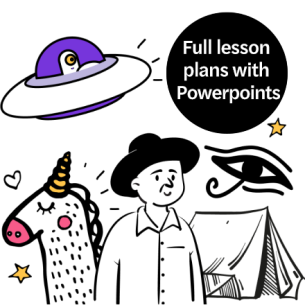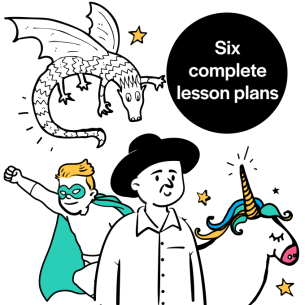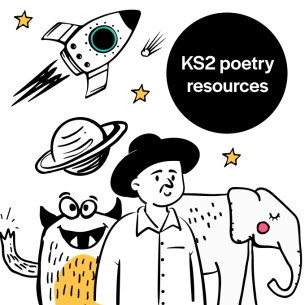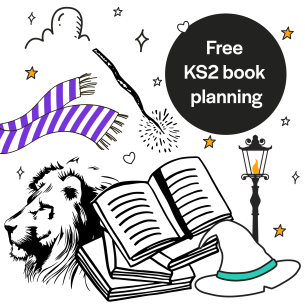In many stories – especially adventures – characters discover an exciting new place and experience a sense of wonder. When writing a fantasy setting, the only limits are those of the writer’s imagination.
Great authors will help readers share the breathtaking experience of approaching a fantasy setting through vivid description, of course, but also through the reactions and interactions of the characters as they take in the new environment.
The use of realistic dialogue can make a fantasy setting feel real. This resource pack will help you guide KS2 children through the process of analysing a scene from Jenny McLachlan’s Dragon Riders of Roar, the fourth book in the Land of Roar fantasy series.
Use these resources while studying the entire novel or use the extract in isolation to teach a range of high-level writing skills.
The accompanying materials will help pupils choose techniques to borrow as they plan and write their own scene in which characters approach a fantasy setting for the first time.
Fantasy setting resources
- ‘How writers create a fantasy setting’ poster
- ‘Exploring writers’ techniques’ worksheet
- ‘Exploring writers’ techniques’ working wall display
- Alternative setting images
- Planning sheet
Five tips for writing fantasy settings from author Jenny McLachlan
Power sentences
I try to keep my fantasy setting descriptions short, but powerful. I include three pieces of information in one sentence that together paint a vivid and clear picture for the reader. These sentences are like a click of the fingers: just like that, a scene is in the reader’s mind.
Use dialogue
If characters reveal what they can see through dialogue, you avoid having long descriptive scenes, which can become boring for the reader. It also means you can reveal what a character is like, by their reactions to what they can see.
Leave things out
Readers don’t enjoy being bossed around by a writer and told exactly what to think. They want to join in the fun of using their imaginations, so leave some things unsaid. For example, you don’t need an adjective before every noun.
Sensible similes
If you’re writing in the first person, you need to make sure that any figurative language you use (similes, metaphors, personification) could believably come from the lips of your narrator.
Arthur is 12, so he’s unlikely to compare golden windows with citrine (an unusual gemstone), but he might say they look like gold pennies.
Keep it real
It can be tempting to make everything seem incredible when writing a fantasy setting – trees are blue, grass is made out of chocolate! I find adding magical touches to otherwise ordinary things is more effective, though.
What is Dragon Riders of Roar about?
At the start of Dragon Riders of Roar, twins Arthur and Rose Trout are about to visit their beloved Land of Roar, a magical world hidden inside a camp bed in their grandad’s attic.
Roar is amazing: it has ninja wizards, merwitches, and dragons they can ride! But a surprise visit from their auntie and cousin means their trip is delayed.
Rose decides that if she can’t visit Roar she will write about it instead. Scribbling in a notebook, she invents a school hidden in the north of Roar called Dragon Rider Academy, where children are trained to ride ferocious dragons.
She designs terrifying lessons, makes herself the star pupil and gives herself an amazing dorm room (with a hot chocolate tap, of course!).
Rose even invents a wicked witch king called Jago Skua. She doesn’t worry about how fierce the dragons are or the terrible things Jago does. After all, it’s just a story.
But then Arthur reads Rose’s story, and in the fight that follows the notebook is shoved into the magical camp bed.
In a flash every single word that Rose has written bursts into to life – the dragons, the school, even Jago Skua – and Rose and Arthur have to travel to Dragon Rider Academy and enrol at the school Rose has invented…
Thank you to Lindsay Pickton for creating the resource pack. Browse more WAGOLL packs from real authors.
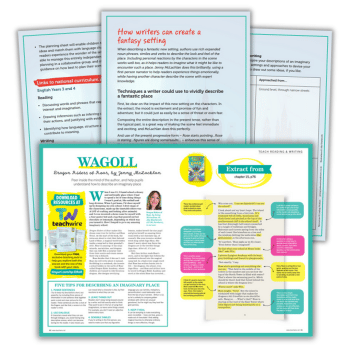
Similar resources
- No Refuge – Graphic novel activities about refugees for UKS2
- Short story writing – Author-led resources for KS1 and KS2
- Christmas activity sheets – KS1 / KS2 fun & educational printables
- Learning gaps – How to ensure no pupil drifts too far
- Writing horror – Write a scary scene with Fear Files: Hide & Seek



